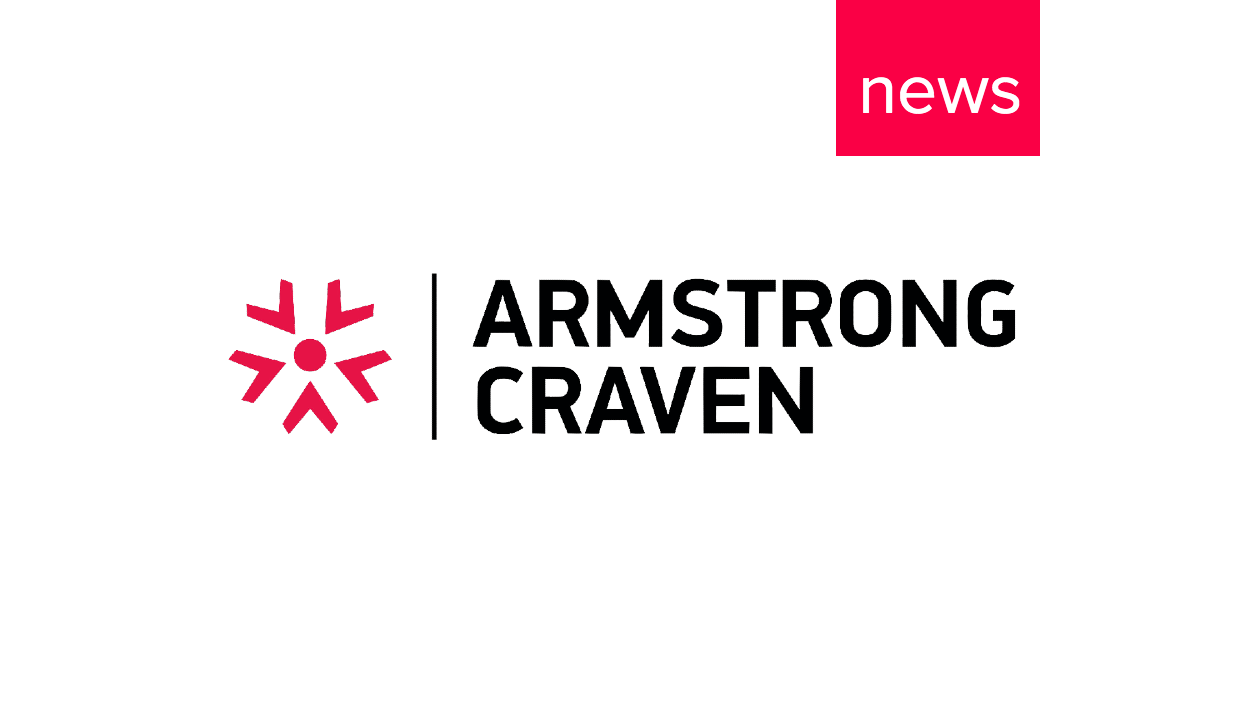Balancing Leadership Priorities
17 November, 2022In partnership with The People Space, Co-CEO Rachel Davis discusses how leaders can manage to deliver talent now and for the future.
In this session with Sian Harrington from The People Space, we discuss how leaders can manage to deliver talent now and for the future. Especially when the economic outlook is challenging in some parts of the world.
How is the economy impacting leadership behaviours?
Rachel Davis: [00:00:22] It is genuinely a hugely uncertain time at the moment. The difference this time is that there are so many factors that we've never had to face before as a group and as businesses. That is influencing individuals' and leadership behaviours, in the sense that there isn't a kind of kneejerk to stop everything, which is good. But at the same time, there's this feeling of just where are we going? How long is this going to last? We've got the energy crisis, which is against inflation, which is even against the countermeasures of interest rate hikes and so on. All of these themselves are kind of feeding into ongoing issues, even the measures to try and counter.
It is a very, very difficult time for businesses at the moment. We need to see the ability, where possible, for leaders to hold their nerve and not just put everything on ice. As we've seen in previous downturns and recessions when that has been the kneejerk response, that what happens is businesses end up paying for that for a long time in the future. We see huge gaps in emerging skill sets and succession plans when businesses just put all their strategy on hold, all hiring on hold, and all thinking about their talent agenda on hold. This means that four or five, ten years down the line, they’ve been playing another round of catch-up. The important piece this time, where possible, is if you’ve got your future business strategy, hold your nerve where you can so that your talent's agenda is not then damaged.
Will the right people be coming back into the Labour Market?
Rachel Davis: [00:02:26] The talent shortage across the globe hasn't abated. Whilst we've got uncertain economic times, whilst consumer confidence is for sure impacted; actually, businesses are still grappling for the skills they need. There is a global labour shortage from the bottom up, and when you consider the emerging skillsets that are needed and the new leadership styles, that is doubly impacting things.
What are the new skills that you're seeing that leaders require?
Rachel Davis: [00:03:15] We've seen an increasing demand for new leadership styles since the pandemic. It was a huge shock to the system. The world went virtual, the world went on lockdown, and businesses were looking really quickly to try and do things differently. It brought into sharp focus the need for a newer style of leadership, and that is a style that is much more empathetic. The old command of control, top-down, where everything sort of trickles down uniformly through an organisation, isn't appropriate anymore.
Leaders need high EQ and ability to influence globally like never before while bringing together workforces that actually are very disparate. Now they are working from home still, they are global, and they are digitised. Of course up against all of that; your consumer base has changed beyond recognition in their behaviours. So again, in all of this uncertainty, it's about the ability to equally manage the shades of grey. Manage and steer through uncertainty, be flexible, stay well to hold your nerves in terms of not letting cited your strategy. That strategy has to flex to get you to that end goal even more so in these times.
What does this mean in practice to organisations in areas like succession planning or organisation design?
Rachel Davis: [00:04:52] What businesses really need now is that agility. Increasingly, we see that businesses are looking to hire for skills rather than experiences and set roles, which is super important. Organisations are now looking for leaders with a much broader range of skill sets. The high EQ, everything that I've just mentioned, is really important. That means the traditional, vertical succession plan that you would see in a business is not delivering that kind of leader. They are too narrow. Forward-thinking businesses are starting to look at ways to get that breadth of leadership experience by increasing the pathways for leaders to reach the top. That kind of removes the command and control that we've talked about before. Actually, for a lot of businesses, there aren't enough of that type of skill set, that type of leadership existing in their current businesses. That's where they really have to think differently about where they find talent externally and equally, how do they grow and nurture that talent internally? Where is it going to come from? That's a big change.
Should businesses be hiring for potential skills rather than past performance?
Rachel Davis: [00:06:40] It's a huge thing. I mean, the fact that potentially is a whole different topic around the DE&I lens. If you're hiring the skills rather than acquired experiences, it opens up the talent pool by definition. You can train and give people exposure to roles and how to do a job. The skill set, innate behaviours and the know-how, the EQ, etc. is much harder to train. So if you're looking for that broader skill set, you can find it in a broader population of people.
What practical ways can future leadership skills be brought in?
Rachel Davis: [00:07:37] There are probably two key areas that businesses can really focus on. The first is internal. The second is external. From an internal perspective, it is really giving up on the idea of your vertical succession plans and your boxes. The idea that somebody has to move into specific positions is no longer working for organisations. Start to look at your talent pool holistically and think about "how do we create an environment where people can much more easily move across roles?" They can develop their career horizontally first with some parallel ways before they start moving up. That's how you can get that well-rounded breadth of experience from an internal perspective.
Externally, it's thinking about that longer-term strategy. Where is the business going and matching the leadership strategy against that? That's where working with organisations like ourselves, by building external talent pipelines comes in. These are not candidates for open vacancies today. It is building a relationship and a network with the talent you need with a future lens and hiring it when the time is right. You're being able to strategically place those individuals into your succession plan and develop them at a time that suits both you and the external pipeline. Moving away from the vertical succession plan and away from the reactive hiring which usually involves an external head hunt.
What can HR do to ensure that people get the skills to step into leadership?
Rachel Davis: [00:09:47] We've seen some interesting examples where businesses and HR is using AI technology, for example, to create an internal job market. By putting talent details into the system, into that market, it can match up and suggest roles that candidates would be suitable for. Thinking about that breadth, it knows the intrinsic skill sets, behaviours, and capabilities for talent to try a role over there that might be slightly different from their current path.
When you're talking about coaching and so on, it needs to all be done openly and isn't just a move for movement's sake; it is absolutely part of the plan. When it's vertical, you would have called it your succession plan and a development plan, but now it's recognising that that can just take you much broader. So that time spent in a new role is about gaining these skills. The time invested is about rounding talent out in a particular area. If HR, the line manager, and the talent themselves are all aware of this, then it is a very open process.
Are businesses beginning to look differently at how they hire and look for skills and internal market marketplaces?
Rachel Davis: [00:11:32] It’s not as widespread as it needs to be yet. We are seeing some of our clients doing some very interesting things. We are working with a business that has an internal job market, and they are using some AI technology to create those matches and suggestions and prompts for people.
We're seeing some businesses that have a kind of suite of projects, and individuals can put themselves forward. Actually, they have carved time out in their week to be able to dedicate to the corporate projects, which again is clearly giving them exposure to other parts of the business. It's honing their influencing skills, their leadership skills etc. Importantly, time out of their week is ringfenced to do that. So four days a week, they might be doing their current role, and then one day a week is freed up to take part in the corporate project.
The other thing we are seeing from forward-thinking businesses is this idea that it has to happen. So a career move, a role move, a secondment must happen. Leaders are actually being mandated to free up their talent. You can't grab hold of your talent and keep it in the silo because you want it in your area. You have to be able to release that talent if it's requested.
What barriers are facing future leaders?
Rachel Davis: [00:13:27] The biggest barrier is a resistance to letting people go out of their teams. This is why in some cases, we’re seeing this being mandated to make it work, especially if the talent is deemed critical for a role or if they are under-resourced. If there is resistance to letting the talent go, the talent itself may think that it might be damaging to their career. If they take a leap into uncharted territories, they are leaving behind where their succession planning is going. It is a whole organisation mindset shift that is needed which then creates the right environment.
Equally for individuals, encouraging the talent to be more readily asking for these opportunities and knocking on doors. That's where you'll start seeing more representation, because the stories and case studies are there. So an individual from underrepresented backgrounds, be it gender, ethnicity etc.. will say, ‘oh yeah, I can do that, I would like to ask that’. Whereas now, we just don't see that. That sense of permission just isn't there.
Is the move away from vertical succession being seen across all markets?
Rachel Davis: [00:14:51] It's a growing trend across all markets. Where we're seeing it really working and paying off is those forward-thinking organisations. Reflecting on some conversations we've had recently, it might be a global bank, it might be a brand company, it might be a chemical company or an electronics firm. Sector-wise it's not restricted. It's definitely just that idea of global thinking.
We are seeing it more successfully, obviously, in global organisations that have that global talent base to move around. But it’s not as prevalent as it needs to be, which is why it still feels so painful to implement. There's definitely a hurdle to overcome for a business to successfully implement something like this.
The same applies to the external talent pipeline. The same mindset shift is required to engage talent externally ahead of need because we’re so geared to today and the short term. Organisations that really embrace that idea of nurturing and maintaining a network with an external talent pipeline are the ones that really benefit.
How can businesses build successful talent pipelines?
Rachel Davis: [00:16:16] Building talent pipelines is a core area of what we do. We work with an organisation to understand their current talent strategy, where they want to go and, therefore, what kinds of skills they want to bring into the organisation. Then not too dissimilar to a headhunt, we take a ground-up research approach to identify the right kind of profiles of individuals that would be right. We engage those individuals, we tell them the story of what our clients are trying to achieve in terms of moving to this future-focussed pipeline strategy.
The idea of being able to build a relationship with organisations ahead of need takes that pressure off a headhunt situation where there is a vacancy and everything's urgent. It's overwhelmingly well-received by the talent in the marketplace, and it's a great way of networking and sharing ideas as this pipeline is created. So our job is to build the pipeline and once handed over to support when needed to nurture those relationships going forward. Ultimately it's giving control of the relationships with talent, to our clients.
What are the first three steps leaders should take to ensure they can manage the balance between short and long term?
Rachel Davis: [00:18:00] Think about where their own career has been and where does it need to go and how they are going to get there? But with the lens of thinking well-rounded. It isn't just a case of; I was the manager, now in senior management wanting to be a director, then a senior director and a VP.
Think about; Do you have experience of different markets? Different geographies? Different business units? And ask yourself how can you get that. If the ultimate aim is to be, the CEO, then look at that leadership team and evaluate which elements fit into your background, experience etc. So you are proactively, as a future leader, starting to manage your career pathway. Remove the idea that it has to be vertical.
The other key area is ensuring that the required skill sets are consciously at the front of your mind, especially that need for versatility and adaptability. Leaders need to be able to influence in a very different world. It isn't a town hall scenario anymore where you are up there with a microphone, and all your employees are in front of you. It's digital, it is remote, and it is global.
The ability to be able to influence without being in a boardroom with peers next to you is really important. This needs to be front of mind. It's not something easy you can change overnight. If you're not careful, you look over your shoulder, and ten years have gone by, and you realise you’ve been doing the same thing with the same style all that time.
From an organisational point of view, leaders need to change how they view and approach succession planning, changing how they look at talent. A proactive approach isn’t a nice-to-have any more, it's absolutely now a must-have. It is the role of HR & the CEO to drive the change forward because it's a different way of thinking right through the organisation, and HR has a really vital role to play in that for sure. Speak to our team today to see how we can support with your future leadership talent strategy.






